
Miopía patológica
Es una complicación que pueden presentar pacientes que tienen graduaciones por arriba de 5 dioptrías
Así ve un paciente con miopía patológica avanzada
Arrastra la barra central para comparar el antes y después.


Antes
Después
- Es una enfermedad que consiste en una acumulación de lesiones en la retina, derivadas de su adelgazamiento.
- Las causas probables incluyen, un globo ocular demasiado alargado o una córnea más curva de lo normal.
- La sospecha de miopía patológica es identificada por el optometrista al detectar una miopía que ya no mejora con lentes y debe referir al paciente con un especialista.

Causas probables
- Es diagnosticada más frecuentemente en personas con miopías altas, mayores a 5 dioptrías.

Factores de riesgo
- Actualmente, no existe una cura para la miopía patológica. Sin embargo, algunas de las lesiones pueden ser tratadas con fármacos o mediante cirugía.
Evolución en la imagen de fondo de ojo
- Sano
- Fondo coroideo
- Grado 2
- Grado 3
- Grado 4
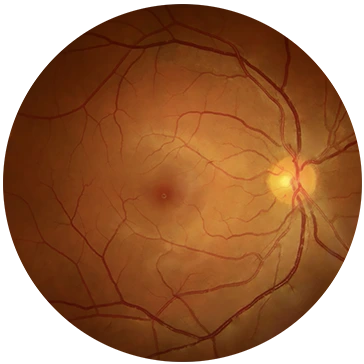
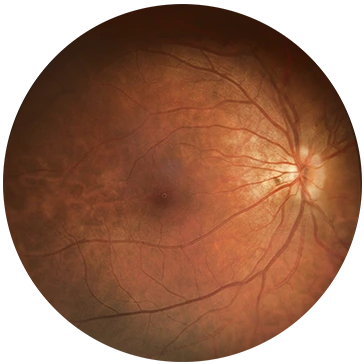
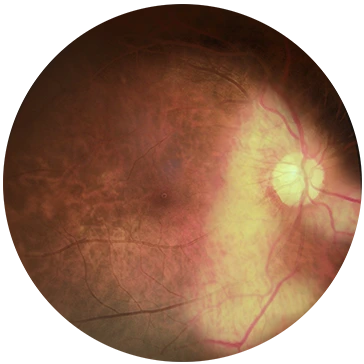
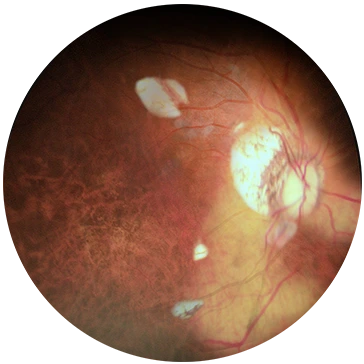
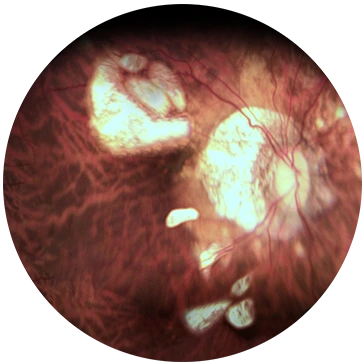
Cambios en la visión del paciente
- Sano
- Fondo coroideo
- Grado 2
- Grado 3
- Grado 4







